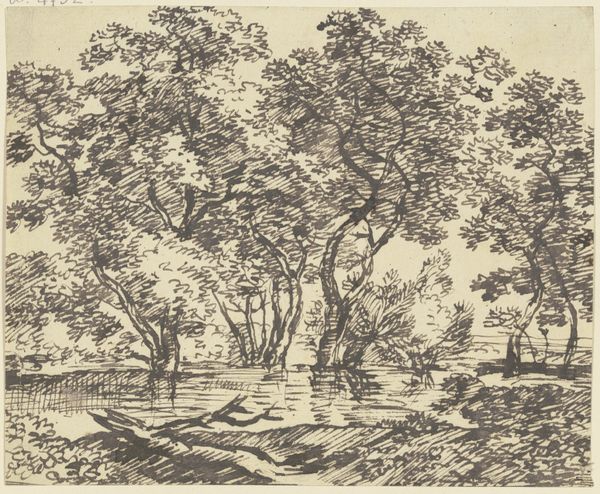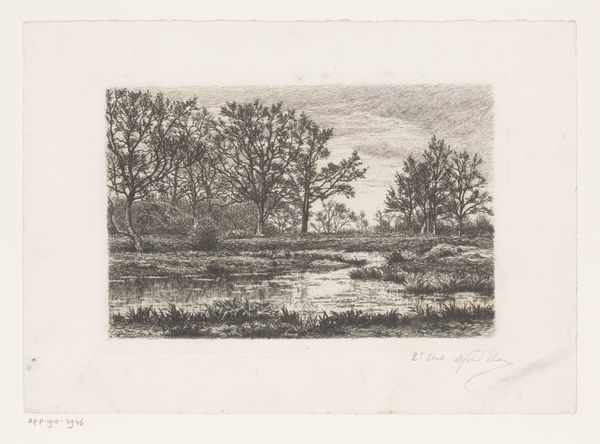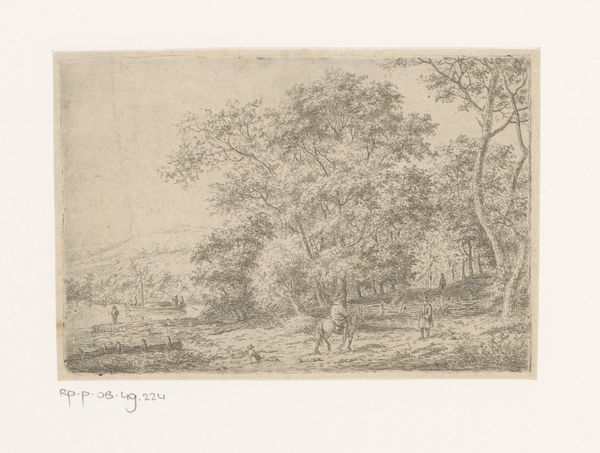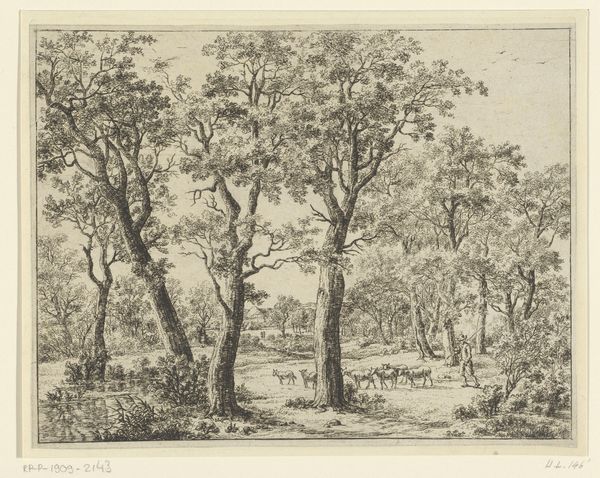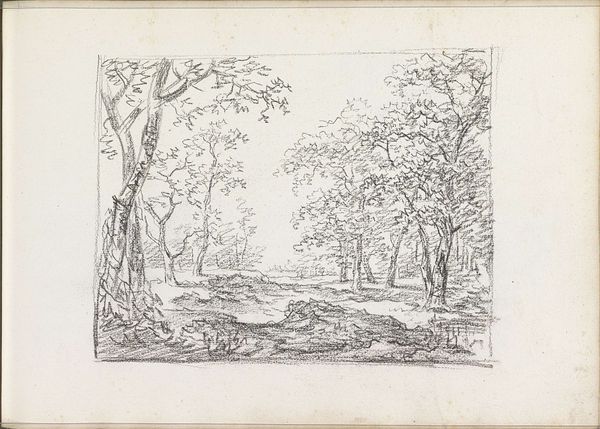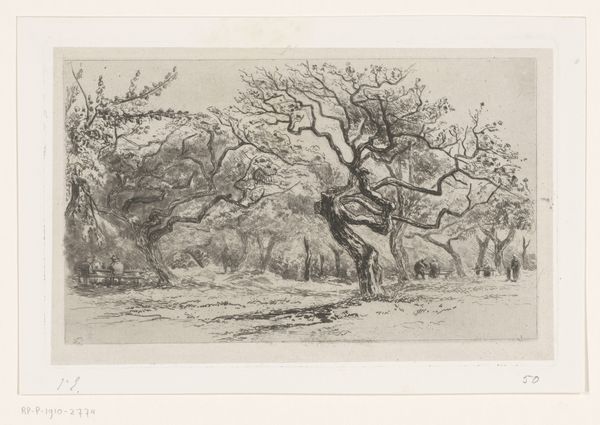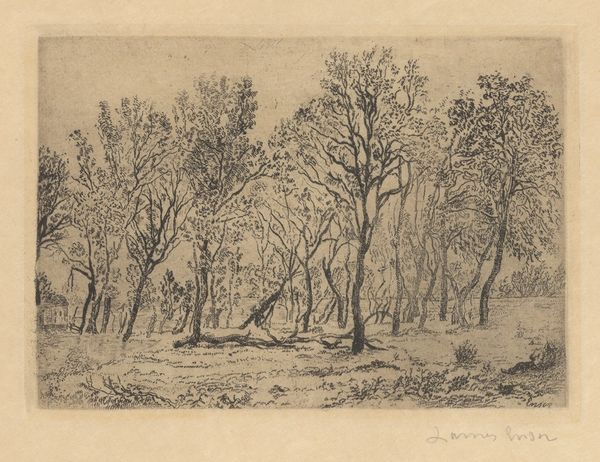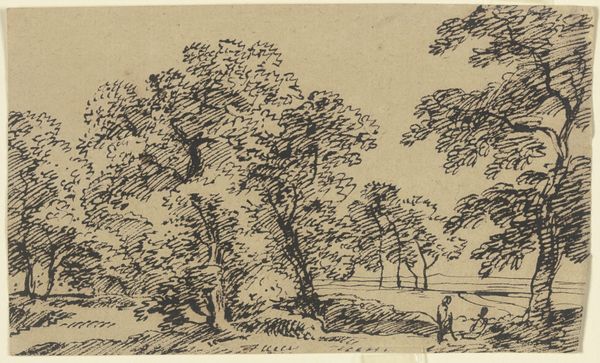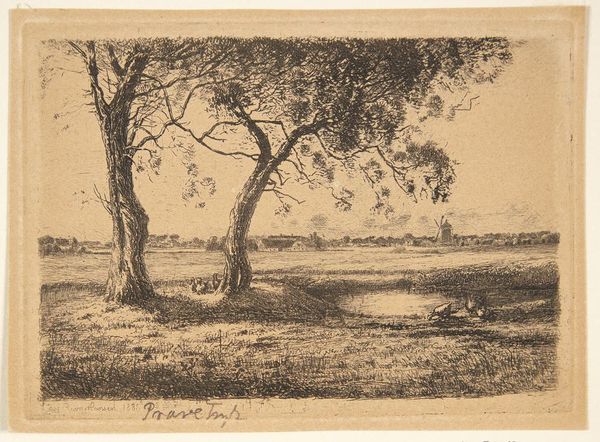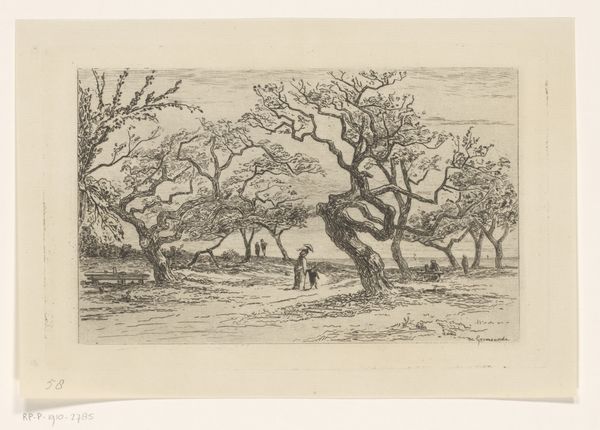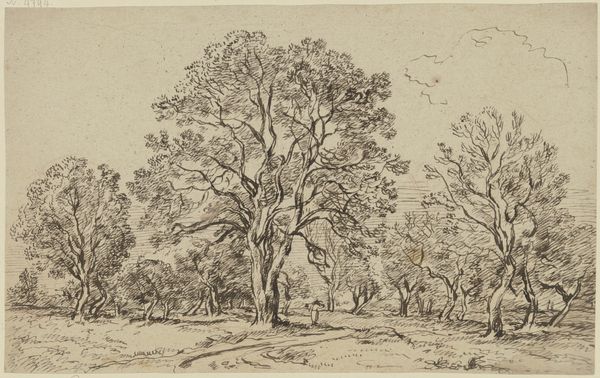
drawing, print, etching
#
drawing
# print
#
impressionism
#
etching
#
landscape
Dimensions: plate: 7.62 × 15.24 cm (3 × 6 in.) sheet: 20.16 × 27.94 cm (7 15/16 × 11 in.)
Copyright: National Gallery of Art: CC0 1.0
Curator: We're looking at Henry Chapman Ford's "California Landscape" from 1888, an etching rendered with such delicate lines. Editor: It has this wonderfully peaceful, almost dreamlike quality. The muted tones, the composition… it all feels very idyllic. Curator: As a print, it’s a great example of how reproductive technologies were making art more accessible. Ford wasn't just depicting the landscape; he was producing multiples for wider consumption. Editor: And who was consuming this? "California Landscape," in 1888… was it aimed at those already settled? Or, perhaps, was it intended to entice further migration, promising a land of tranquil beauty and natural resources? There’s something of the colonial project embedded here. Curator: Etching allowed for a level of detail that other printmaking methods couldn't achieve as easily. Note the complexity in the tree branches. Editor: Right, the massive tree in the foreground dominates the composition. Its heavy bough acts as a kind of framing device, emphasizing the tamed nature and perhaps obscuring the perspectives of the people, particularly Indigenous peoples, who already inhabited that landscape. Curator: Ford himself was quite involved in documenting California’s missions, making him an important recorder—and participant—of the state’s transformation during this era. His drawings and prints often show us the social changes occurring at the time. Editor: He carefully selects what and how to display it. This image idealizes pastoral scenes while eliding the fraught realities of land displacement, cultural erasure, and, most importantly, the actual labor necessary to make that land cultivable in the first place. Where are the ranch hands in this romantic tableau? Curator: The work showcases Ford’s skill, demonstrating his command of materials and processes, but also the growing market for affordable, reproducible landscapes that offered an interpretation of what "California" signified during a period of aggressive territorial expansion and the development of agricultural capitalism. Editor: The light is soft, and pastoral... I want to look past the appealing aesthetics and question that feeling and the conditions of possibility of that “peaceful” scene in 1888. What could Ford not, or did not want to represent here? Curator: Thinking about "California Landscape" this way highlights how artistic production, especially in a medium like printmaking, engages with historical context. Editor: Absolutely. These landscapes weren’t neutral depictions; they helped shape perceptions of place and justify specific social and political agendas, which continue to resonate today.
Comments
No comments
Be the first to comment and join the conversation on the ultimate creative platform.

